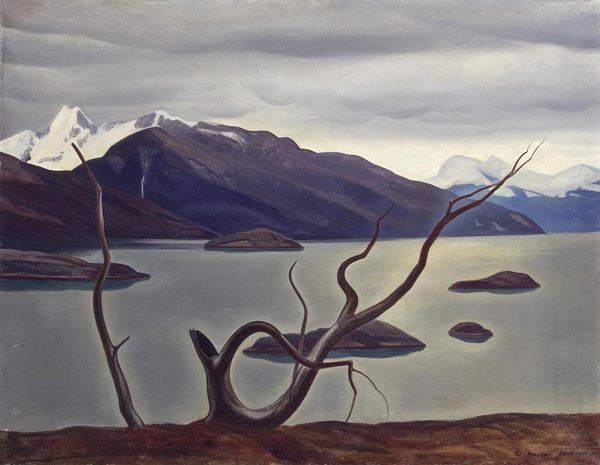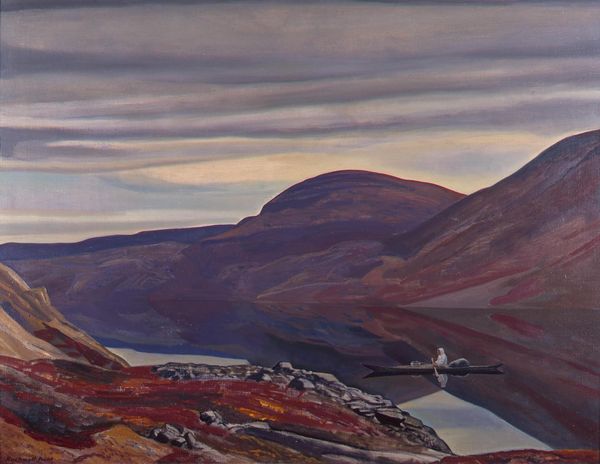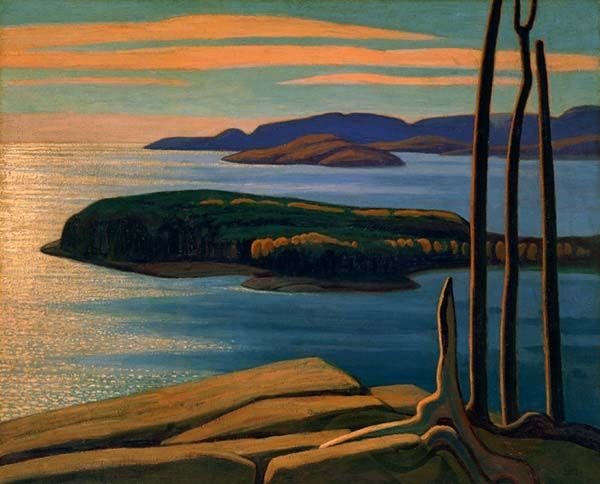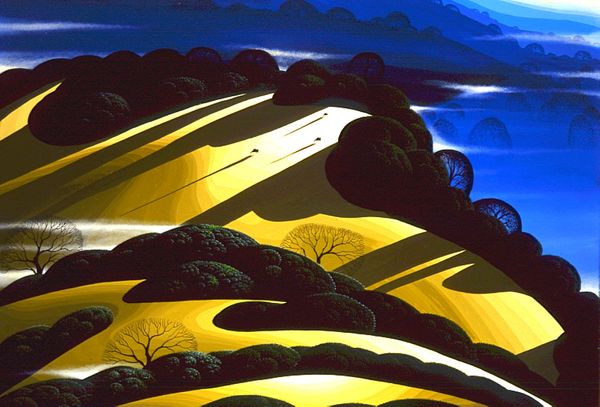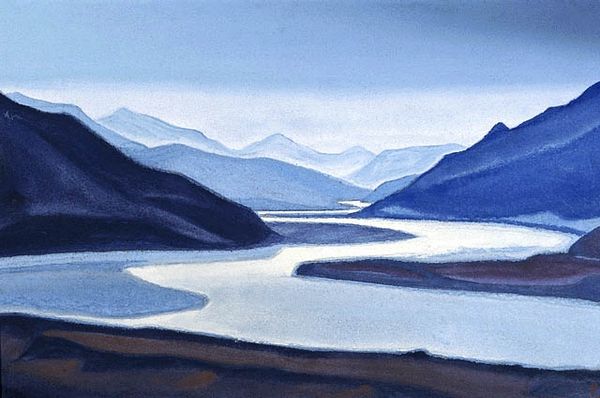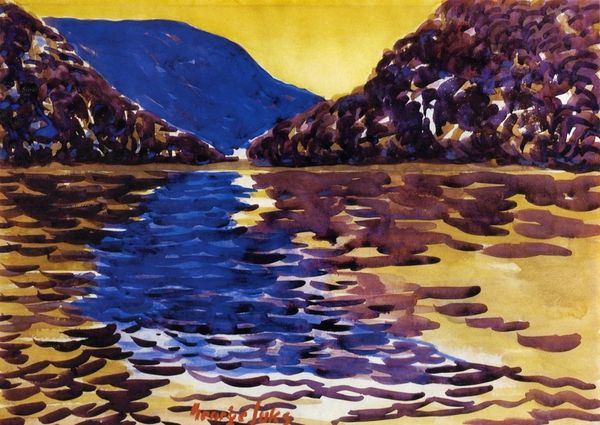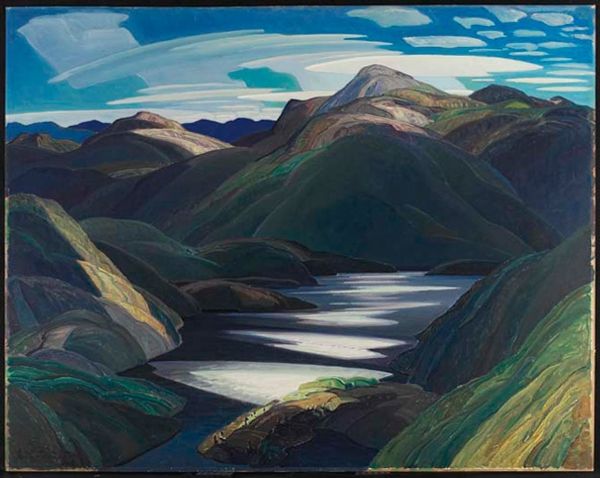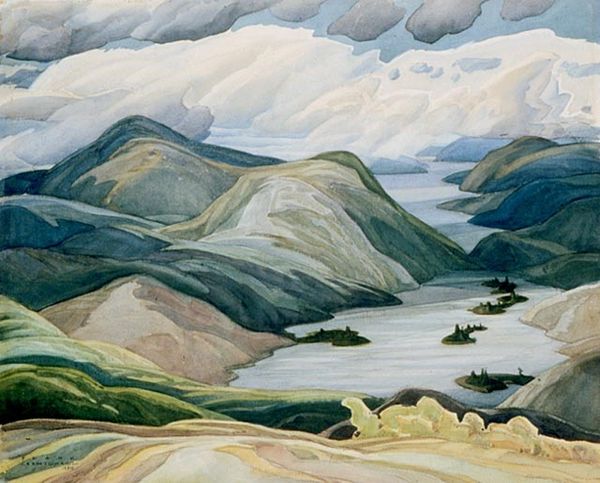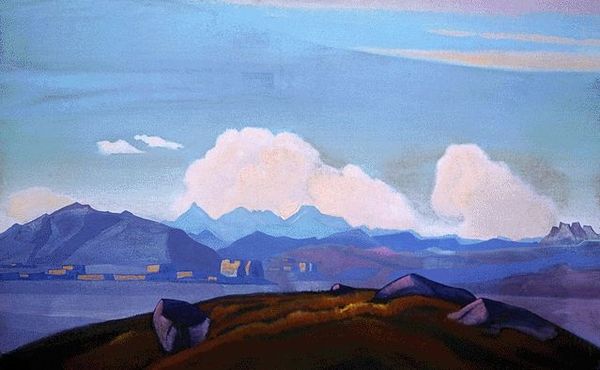
plein-air, oil-paint
#
plein-air
#
oil-paint
#
landscape
#
oil painting
#
northern-renaissance
#
modernism
Copyright: Public domain
Editor: Here we have Franklin Carmichael's "Cranberry Lake," painted in 1938. It's an oil painting, and the landscape has a very still, almost haunting quality, don't you think? What kind of story do you believe this picture is telling? Curator: I see this as Carmichael engaging with the evolving Canadian identity through landscape painting. The Group of Seven, to which he belonged, sought to define a distinctly Canadian aesthetic, separate from European traditions. Consider how the barren trees in the foreground act as a screen, framing the distant, idealized wilderness. Editor: So, you think those almost dead trees are intentional? I thought it looked a little sad, even ominous. Curator: Precisely. This wasn't simply about depicting pretty scenery; it was about staking a claim to a specific vision of the Canadian North. Ask yourself: why these stark, skeletal trees and not lush forest? How does the depiction of nature tie into national identity formation during the early 20th century? Think of the politics of imagery - what’s deliberately shown and deliberately obscured? Editor: I never really considered that political aspect. It's more than just trees and lakes; it represents a claim to defining Canadian art. Curator: Indeed. This isn't just plein-air painting, it is the public performance of nation-building through visual culture. How effective is it, do you think, in conveying this specific image of Canadian identity to its intended audience? Editor: Seeing it that way changes my perspective completely. It gives new appreciation to the power art has. Curator: Exactly, and how institutions like museums solidify those national narratives! Food for thought.
Comments
No comments
Be the first to comment and join the conversation on the ultimate creative platform.
